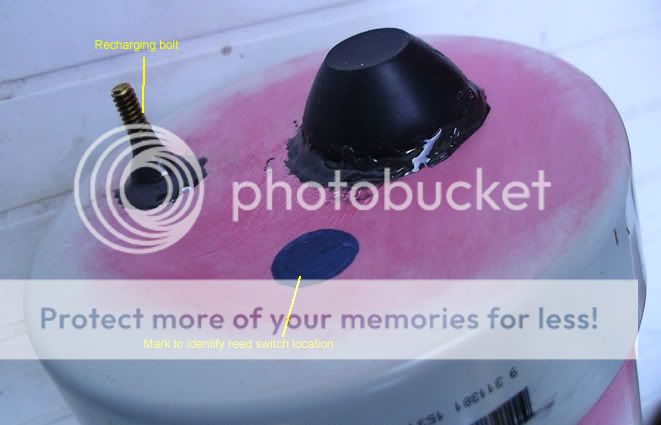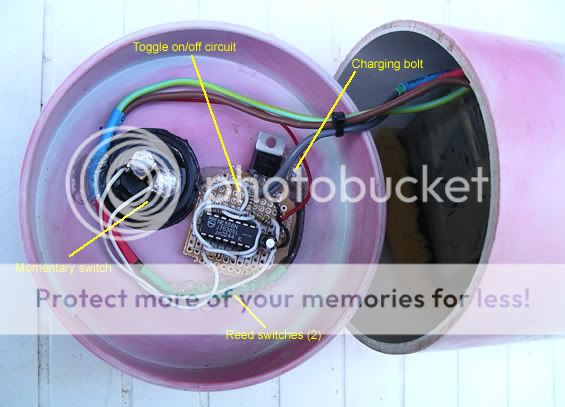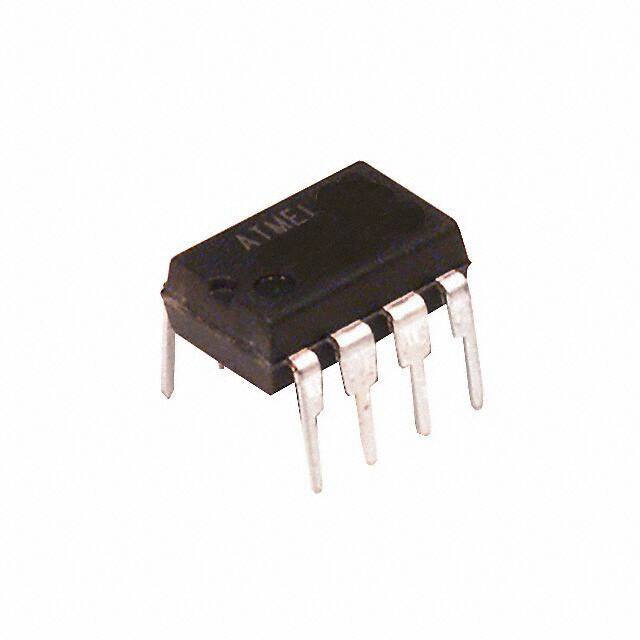Klem
Enlightened
Storm Monkey...Can't answer all your questions but I do know you won't get more than 500ms (half a second) of continuity out of a piezo switch, regardless of how hard you press. Typically it's much less than that.
The way it works is the harder you press the longer the contacts close, but no more than half a second is possible in a typical piezo.
If your driver demands more than half a second to operate the modes then I can't see it working with a piezo. As Lucca said, it will have to be something else like a reed switch, or normal press-switch like a cheap $10 boat starter button.
Bear in mind if you use a normal momentary press-switch water pressure will push against your momentary and it could turn it into constant ON when you dive.
One of my first builds a few years ago used a boat starter switch. Luckily the thick rubber hood was so strong, and the shape naturally resisted being compressed. I say luckily because I hadn't even thought of that. Cut a long story short... it worked, but I never went below 20mts so don't know if the switch would have held out at greater pressures.
The completely sealed canister idea came unstuck when one of the reed switches fused closed. I used brass bolts for charging and the reed switches disconnected the positive bolt from the battery when not being charged. Put a magnet near the reed switches and the positive bolt went 'live'. Then I connected the bolts to a charger with a couple of croc clips. When fully charged, remove the magnet, so when diving the positive bolt was isolated and wouldn't short-out with the negative in salt water. I put the two charging bolts at opposite ends of the canister (furtherest apart I could get) just in case the bolts went 'live' when they weren't supposed to...which they did!
I can only think one of the reeds fused in the on position because of either being bashed about, or because the charger was pumping at 500mA, and the 2 reeds were 300mA each, in parallel. Who knows?!
When I drilled into it to fix the reed switches I found humidity and micro leakage had built up and was corroding all the wiring. There were droplets of water inside and it became all too hard to fix... that was the end of that torch.
Moral of the story...don't make your canister permanently sealed!
Couple of photos


The way it works is the harder you press the longer the contacts close, but no more than half a second is possible in a typical piezo.
If your driver demands more than half a second to operate the modes then I can't see it working with a piezo. As Lucca said, it will have to be something else like a reed switch, or normal press-switch like a cheap $10 boat starter button.
Bear in mind if you use a normal momentary press-switch water pressure will push against your momentary and it could turn it into constant ON when you dive.
One of my first builds a few years ago used a boat starter switch. Luckily the thick rubber hood was so strong, and the shape naturally resisted being compressed. I say luckily because I hadn't even thought of that. Cut a long story short... it worked, but I never went below 20mts so don't know if the switch would have held out at greater pressures.
The completely sealed canister idea came unstuck when one of the reed switches fused closed. I used brass bolts for charging and the reed switches disconnected the positive bolt from the battery when not being charged. Put a magnet near the reed switches and the positive bolt went 'live'. Then I connected the bolts to a charger with a couple of croc clips. When fully charged, remove the magnet, so when diving the positive bolt was isolated and wouldn't short-out with the negative in salt water. I put the two charging bolts at opposite ends of the canister (furtherest apart I could get) just in case the bolts went 'live' when they weren't supposed to...which they did!
I can only think one of the reeds fused in the on position because of either being bashed about, or because the charger was pumping at 500mA, and the 2 reeds were 300mA each, in parallel. Who knows?!
When I drilled into it to fix the reed switches I found humidity and micro leakage had built up and was corroding all the wiring. There were droplets of water inside and it became all too hard to fix... that was the end of that torch.
Moral of the story...don't make your canister permanently sealed!
Couple of photos


Last edited:





